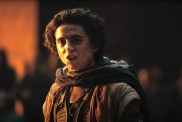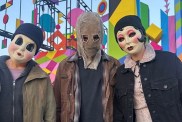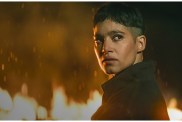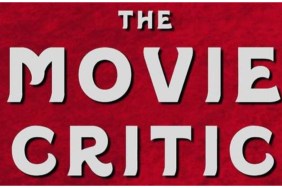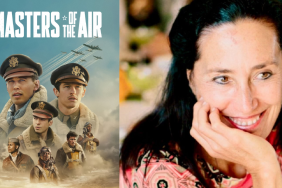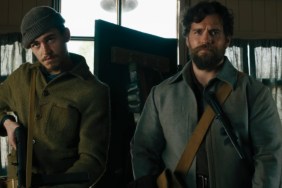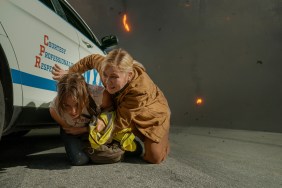
Set against the backdrop of Africa, the film stars Rob Freeman as Brian Murphy who joins forces with Daniel Dambele (Prince David Osei) to cross the vast South African desert by any means necessary to find a means to get out of the country and locate Dambele’s son.
A daunting task under normal circumstances becomes particularly challenging after the zombie apocalypse.
The Dead features some truly unique alternative to the zombie fare we have been seeing today and comes highly recommended from us. Shock Till You Drop got on the phone with the Fords to discuss their release.
What was your inspiration for shooting The Dead in Africa?
Howard J. Ford: It was always going to be a stranger in a strange land, so to speak. One guy stuck in a very harsh and difficult environment that would be difficult to survive in, even without the zombies. Africa came about by visiting locations on other shoots and realizing this would be the ultimate place to have a zombie movie. Theres no place you could lock yourself away. Theres no place to survive and its a harsh terrain to survive in. The film is about survival, first and foremost. We found Africa while we were doing TV commercials. We were driving in between locations and we thought wow, these village huts look fantastic. We should do a movie here. Then, John mentioned the zombie movie we never did, and that was it.
Jon Ford: One other important aspect was our lead actor, an American guy, experiencing the clash of cultures and the uniting of cultures and also the spirituality and the different points of view. No one has ever done anything quite like that before and now we can see why.
In terms of casting, how did you arrive at your final casting decisions, particularly Prince David Osei?
Howard: Prince David Osei was a fantastic discovery. We were originally considering flying an actor out from the UK. We were even offered the winner of Big Brother: Africa. We wanted someone with a real local flavor and that was unfamiliar so he would appear very real. We put feelers out and then he came in through a read from an advertising agency. We sent a few pages of the script. The agency sent us some MP4s of a bunch of actors talking. Once we got to him, we said that is our guy. That is the guy weve been writing.
John: We had actually worked with him, a few years previously, on a commercial we had done. He wasnt a major role, but he had been in it and we didnt even know.
A lot of the kills and more intense scenes in the film took place during the day, whereas in most horror films, the kill scenes take place at night. Can you tell us about your inspiration for taking that less conventional approach?
Howard: I have to say I credit Romeros Dawn of the Dead with that one. He brought the horror out in to the daylight. That was a chilling thing in itself. We wanted to try and tap in to some of that. Come day or night, the horror is always present. Its relentless, like the zombies themselves. Its a relentless horror.

Howard: In the daylight, you can see the zombies coming from miles away, and that adds another aspect to the fear.
That was very effective.
Howard: Thank you.
John: Thank you.
How did you cast the zombies for The Dead?
Howard: The zombies you see, for the most part, are the people who lived in those villages. The people of Africa are starving people. Its an incredibly impoverished country. We found out that a local job was like unloading and loading bags of rice for one dollar a day for a twelve hour shift. These are massive, heavy bags of rice. Then, we come along and all you have to do, for many times what youd get in a day, is walk from point a to point b as a zombie, very slowly, and sometimes just once. We couldnt keep people away. They absolutely loved it and embraced that side of it. These are people who havent seen cameras before, and they didnt have electricity in their village or running water, in a lot of the places we filmed. By casting the zombies we were able to actually help the people. Everyone who became a zombie walked away with a good sum of money and food and drink and made to feel very welcome and a part of the project. You couldnt keep them away . The awful truth is that it gives you a certain look. All of the zombies are emaciated and starving. The zombie you see in the opening sequence whose leg bends backwards, that is a guy whose leg bends backwards. He had polio as a child and his leg bends backwards. We added the bone effect and the bone splintering effect. This guy came with us, many, many miles because Jon and I had it in the script that a zombie needed to have a wonky leg. He got paid three months money to come with us for three days. He literally almost jumped for joy. We had to do repeat takes with that guy because we couldnt get him to stop smiling. That was the trickiest part of working with him. One other thing, theres a zombie toward the end in the rock formations. We found him wandering about in the rock formations and we cast him, because he looked amazing. We used a little bit of makeup, but not too much. Before we started, the translator said do you mind if this guy eats, he hasnt had a meal in three days. We were like oh, of course. Come on.

Howard: Its somewhere between having big knives pointed at me during my mugging, or guns pointed at us by armed police with AK-47s, or lying in the hospital dying with malaria, or food poisoning. I lost a bunch of weight. It got to the point where my clothes just wouldnt fit me anymore. It was pretty grueling. This was after we couldnt get our equipment out there. We were stuck in Africa for five weeks before we even got one frame in the can. It was a horrific time. Its really hard to explain just how tough it was. Jon and I would often discuss shots between vomiting and diarrhea. Im sure this is lovely for your readers. That was the way it was. Wed be like ok, should we put this lens on? Excuse me for a second [makes vomiting sound]. Youre working on a whole new level.
Well, it appears to have all worked out for the greater good.
Jonathan: Thank you.
Howard: Thank you.
How long did it take you to scout locations?
Howard: Several months, beforehand, we found several excellent locations. By the time we got to do the actual shoot, and everything had gone wrong. We had been robbed by the police on a daily basis and we were getting malaria and tropical diseases and God knows what else. We had to literally just go off the cuff. We would travel to desolate places and wed say theres a good place for that scene, lets do it there. A couple of the locations we were able to set before, but mostly we had to make it up as we went along.
Jonathan: We found some amazing locations. The rock formation was amazing. We absolutely insisted that we were going to get there, no matter how many armed police got in our way and no matter how many diseases. Its such a shame that we couldnt commit some of the locations to celluloid. But, by the time the schedule had gone to pot, it was a case of, OK we may have found this amazing tree but, hey that tree will do because its getting dark in an hour and we need to bang out the shot. There were a lot of things that we wanted to get but couldnt and there were a lot of compromises that we had to make. Hopefully they dont show too much. But, hey, theres always part two.
Its been a pleasure talking with you guys. Thank you!
Howard: Keep an eye out for my book, Surviving the Dead. It will go out a couple of weeks after the U.S. DVD. Its literally going to reveal all of the horrible secrets of what happened during our time in Africa.
We will keep and eye out. Thanks again.
Jonthan: Thank you.
Howard: Cheers!
For more on the film – including photos, videos and more – follow this link!
